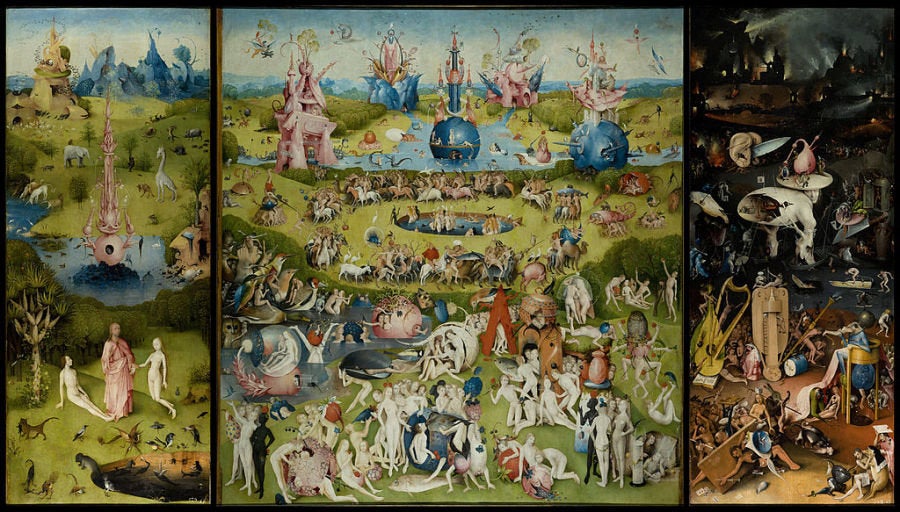Perhaps you have a Vincent van Gogh coffee table book. Perhaps you've seen his works in a museum. Perhaps, like myself, you've even seen a tourist couple rub their hands over a van Gogh at one of the big New York museums when they thought nobody was looking.
But that cursory knowledge makes you a potato eater compared with the familiarity of someone who's spent over half a decade researching at the museum devoted to the artist in his works, or a lifetime sharing his name.
As part of this year's commemorative van Gogh celebrations -- based around the 125th anniversary of his death -- the Van Gogh Museum in Amsterdam just opened their blockbuster exhibition "Munch: Van Gogh," which pairs the Dutch and Norwegian artists together to highlight the little-known similarities of the two European masters.
In anticipation of this exhibit, the Van Gogh Museum in Amsterdam offered The Huffington Post access to multiple employees, including Teio Meedendorp, a key researcher for the museum, and Willem van Gogh (born with the first name Vincent), an ambassador for the museum and the great grand-nephew of the beloved artist. Willem had Vincent's original paintings hanging in his house growing up.
HuffPost will be publishing a brief series of articles based on these and other interviews from the museum, with this first one tackling trivia that could only come from spending years deep in research -- or being part of the family.
1. Contrary to popular myth, van Gogh sold more than one painting and didn't work with candles in his hat.
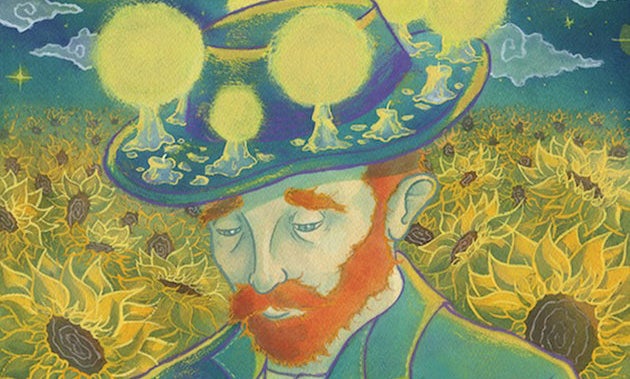
With there being as many myths about van Gogh as there are lights in a starry night, it may be difficult for the casual fan to separate the true stories from the false ones. Unlike the yellows of van Gogh's painting, quite a few myths somehow haven't faded over time.
Meedendorp told HuffPost that one myth that endures is the misconception that van Gogh only sold one painting in his entire lifetime. According to Meedendorp, researchers of the artist know that van Gogh actually sold "several" paintings before his death.
This myth is particularly unfortunate because it also further fuels the idea that van Gogh was fully rejected as an artist while alive, which wasn't the case. Meedendorp points out that he was only working as an artist for 10 years before his suicide and that "it's after some time that you get known and you start to sell." The key researcher at the Van Gogh Museum further explained, "His misfortune was that he only worked for 10 years when he killed himself. He would have sold more if he had stayed alive."
On the more romantic side, a popular (and equally false) myth recounts how van Gogh would paint at night, using candles in his hat for light. "It's quite a wonderful myth ... quite lovely in a sense," Meedendorp said, before dispelling any of its truth.
According to Meedendorp, the myth originates from the French journalist Gustave Coquiot, who wrote a book on van Gogh in 1922 which included the "anecdote that [van Gogh] was painting with this candle in his hat along the river for 'Starry Night.'" But van Gogh wrote in his own recollection of that moment that it was done "simply by gaslight."
2. Young van Gogh would regularly attempt to turn in flowers instead of his homework, which he often didn't complete.
Van Gogh had little interest in doing homework, perhaps one of the more relatable details of his lifetime.
When he studied theology in Amsterdam, he also had to take courses on subjects such as algebra, Latin and Greek. According to Meedendorp, he wasn't concerned with these secondary classes for priest-work, and so he put off his lessons.
A teacher of van Gogh's during this time told a story, Meedendorp recalled from his research, during which the teacher "could exactly tell in the distance [as van Gogh headed toward him] if [van Gogh] had or had not made his lessons because he would have had some flowers with him." Having little money, van Gogh would steal the flowers from a graveyard on the way, intending to turn those instead of his homework. This "underlined the soft character that Vincent had," Meedendorp said.
3. When van Gogh felt as if he did a bad job at theological school, he would flagellate himself with a stick.
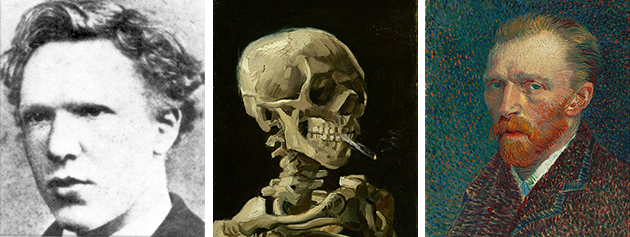
Pulitzer Prize-winning Steven W. Naifeh and Gregory White Smith's book, Van Gogh: The Life, details how van Gogh would punish himself physically for religious reasons. Some claims from the book include van Gogh going into storms without an overcoat, only eating black rye bread and sleeping on a walking stick.
Although the Van Gogh Museum disagrees with a widely publicized section in Van Gogh -- particularly chapters in which the authors claim that van Gogh didn't commit suicide and was murdered -- Meedendorp did talk about van Gogh's surprising propensity for self-harm.
Meedendorp said that "van Gogh would sometimes hurt himself or punish himself if he was not making lessons," an account that also comes from the aforementioned teacher in Amsterdam.
4. Van Gogh's love life was often complicated, but when he fell for a cafe owner while penniless, he won her over by dedicating new flower paintings to her, rather than buying the real thing.
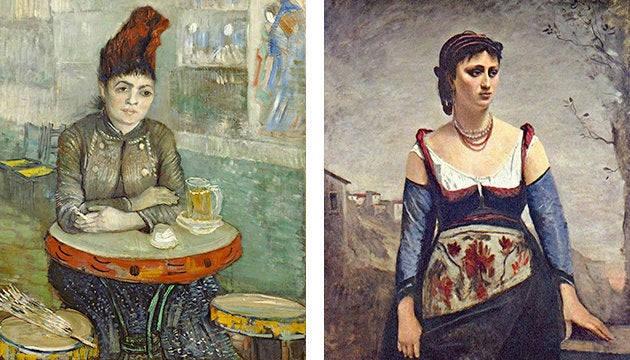
Willem van Gogh told HuffPost of a story he likes "very very much," involving an affair his great grand-uncle had with an older ex-model who ran a Parisian restaurant called the Café du Tambourin.
As the great grand-nephew tells it, van Gogh became enamored with Agostina Segatori and eventually made a portrait of her (pictured above left, with Jean-Baptiste-Camille Corot creating the other). But during the initial courting, van Gogh "wanted to buy flowers for her and to express his love for her, but he couldnt afford it," Willem said.
No longer needing to steal flowers from the local graveyard, van Gogh could act through his art. Willem continued, "When he met Segatori, he was practicing on still-lifes and especially on flower still-lifes." Willem began to laugh and then said, "Every bouquet of flowers he painted, he said to Segatori, 'This one is for you,' instead of giving her a real bunch of flowers. That's a story that I think is very cute."
According to the legend surrounding their encounters, van Gogh would often pay for meals at the tambourine-themed restaurant with his paintings, which would then be put up on the walls. This last detail may just be one of those prevailing myths, however.
5. A family with a wife and children was "the one thing that he really wanted in life." Van Gogh never succeeded.
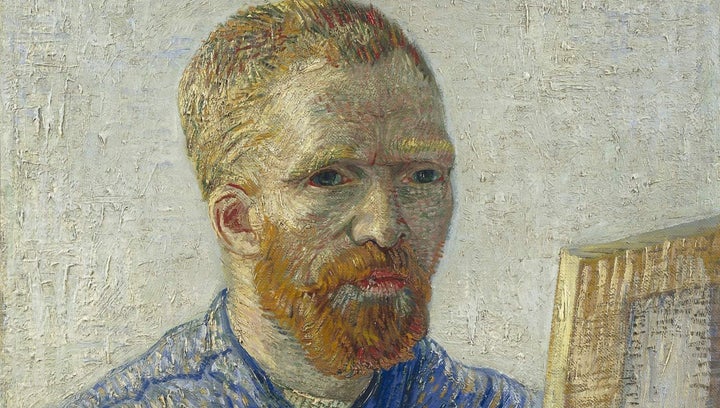
"The one thing that he really wanted in life [...] was to have a wife and children and, of course, he never succeeded," Meedendorp told HuffPost.
According to Meedendorp, the artist knew that "it was difficult for him to meet people," and consequently, start a family. However, since his own family had been so important to him growing up, he continued to dream of having his own.
He did spend a year and a half "playing family," as Meedendorp described, in the Dutch city of The Hague, with a model and former prostitute, Sien Hoornik, and her child. After this relatively long relationship, though, van Gogh's broader relationship with women "was more difficult and much shorter," said Meedendorp.
The artist had happy but mixed feelings that his brother, Theo, was able to achieve such a family. When Theo told him he was going to have a son, Vincent van Gogh painted the now famous "Almond Blossom" and gifted it to the couple. Willem van Gogh told HuffPost that this work, which was dedicated to his grandfather, is a particular favorite of his descendants.
BONUS: You've been pronouncing van Gogh incorrectly. It's supposed to sound like "van Khokh."
Speaking with these well-researched members of the Van Gogh Museum -- who are, of course, Dutch -- caused a realization that van Gogh isn't pronounced "van-go."
While all three were beyond helpful (and nobody corrected my American pronunciations), it may have taken me too long over the phone to realize there wasn't another prolific painter during van Gogh's lifetime with a name that sounded mysteriously like "van-hawk."
In any case, now you can van-go back and re-read this article with a more accurate pronunciation in your head.
Also on HuffPost:
For a constant stream of entertainment news and discussion, follow HuffPost Entertainment on Viber.


